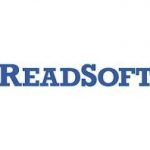10 Points about Akamai’s State of the Internet Report

10 myths & realities of USA Broadband
There is a big difference between the speeds of internet subscriptions that consumers can buy and what they actually choose.
The quarterly publishing of Akamai’s “State of the Internet” report has become a media event. Unfortunately, there are some people who misunderstand this report. There is no doubt that Akamai is the world’s leading player in the content delivery network (CDN) industry, but its report has taken a life of its own and is frequently used without context to further a particular political viewpoint. In general many people mistake Akamai’s measures for the internet itself and believe it an accurate reflection of the broadband speeds available – this is not the case.
Strand Consult’s new report “Understanding Net Neutrality and Stakeholders’ Arguments” discusses the evolution of the CDN industry and its role in traffic management on the Internet. To be sure, CDNs play a vital role to speed on demand video and to accelerate websites, online transactions, and cloud computing. But a report of a CDN server network, such as Akamai’s report, is not necessarily an accurate reflection of all internet activity or the available speeds.
Akamai’s measurement is similar to a police officer clocking cars on a highway. The measurement is simply a reflection of a point in time; the car could go faster or slower, but it is not the way to describe the maximum speeds cars can achieve. Similarly Akamai measures the tier that consumers choose to buy, not what is available. In reality, consumers have access higher speeds, but they tend to subscribe to a lower tier that fits their needs and budget. This important fact is overlooked in the hype about the “State of the Internet” report.
Following are 10 points to take into consideration when reviewing Akamai’s state of the internet report.
- The Akamai State of the Internet report is a quarterly measure of broadband speed on its network. Like all studies of broadband, it has strengths and weaknesses. Akamai, the world’s leading content delivery network (CDN), collects over 1 billion unique IP address per day. See the report here.
- The report is a measure of Akamai’s content delivery network, not the internet itself. Akamai itself points out that the speeds reported are not intended as a measure of the access link speed and are” based on measures that Akamai’s customers have found useful.”
- The speeds reported from Akamai and dedicated broadband measurement companies can differ significantly. For example, Akamai may report average speed in the U.S. at 7 Mbps, but Ookla reports 15 Mbps and SamKnows 14 Mbps for the same period. For Akamai, this can be explained by the kind of data its network serves. Akamai has a large portion of streaming video traffic in the U.S. Video is rarely, if ever, delivered at the full speed capability of the access link. For example, even a high definition stream at 5Mbps will only use one-tenth of a 50 Mbps connection, and it will be recorded by Akamai at 5 Mbps. So countries that have higher rates of streaming should record lower Akamai results. Akamai’s measures tend to be weighted toward IP addresses that deliver a lot of video content, given that this is Akamai’s business. However, not all subscribers access streaming video.
- Advertising can also slow the speeds of Akamai’s report. Ads may run for 10-15 seconds, and that delay in the video stream can slow the measurement.
- The Akamai report measures speeds purchased, not speeds that are available. The available speeds could be higher. A subscriber may have the option to purchase 50 Mbps but only choses 10 Mbps. Hence Akamai is like a speed meter on a highway. The meter measures the actual speed of the cars at the time, but the cars could travel faster at a different points. Using only Akamai to judge broadband speeds can be misleading.
- Akamai points out some factors that slow average connection speeds. These include parallel requests (a browser may make multiple requests for the same content), small files (some connections are so fast and short that they can’t be measured), and IP address sharing (multiple devices sharing a single internet connection).
- All things considered, the most valuable measure in Akamai’s report is the average peak connection speed measure. Akamai explains how this measure is calculated: “an average is taken of only the highest connection speed calculated from each unique IP address determined to be in a specific country or U.S. state. Within the report, we note that we believe that the average peak connection speed is more representative of Internet connection capacity.”
- One benefit of Akamai is the frequency of its measurement. Given that it reports quarterly, it can demonstrate trends over time. For example, the US has had a steady improvement from #22 in the world for speeds in 2009 to #8 today. However country comparisons in broadband are not ideal. Densely populated Hong Hong is not actually an independent country, and it amounts to just 0.01% of the area of the USA, but yet it scores #1 as a country with the highest average peak speed. The inclusion of Hong Kong seems arbitrary. The same measure would put Washington, D.C. at #3 in the world, and yet this city-state is not included. In this way, Akamai’s report is often used to support biased, one-dimensional assessments of a country’s broadband market.
- Akamai can be helpful to compare speeds over time. For example, top speeds have slowed in some countries, which may be attributed to less demand.
- It is important to take into account that Akamai’s business model is selling its CDN solution to enterprise content providers and websites. It is not a true broadband measurement company or standards organization. The State of the Internet report earns Akamai valuable free marketing and PR from journalists and politicians who use the information as “facts” or evidence for a particular story. Critical readers should take note.

American broadband
To Akamai’s credit, it discusses these and related issues on a blog post. In summary, the broadband speeds are a function of many factors. In most cases people buy less than the top speed because their needs are served at a lower tier. In practice, broadband speeds are increasing faster than consumers’ demand and the needs of services and applications.
Akamai’s State of the Internet Report fuels debates in many countries. Critics use it as “evidence” that a country’s broadband speed is not good enough. These participants are not fully informed to what the numbers mean. Too often people forget to look at the broadband internet marketplace, the speeds available, and what consumers actually buy.
Strand Consult’s report “Understanding Net Neutrality and Stakeholders’ Arguments” discusses the future of CDNs in a net neutrality perspective. For more information contact us about the report.
Source: Strand Reports








